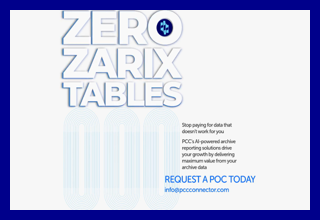When designing dashboards, most customers create them in what I would call the “classic approach.” They try to visualize a set of classic metrics, but often forget the most critical aspect—what action do we need to take next?
Creating a great dashboard isn’t just about choosing the best chart and which colors to use. The most critical aspect of your dashboard starts with understanding the requirements and making sure that you are
visualizing the right KPIs—not just metrics.
But before we look into some aspects of how we can make our dashboard more actionable, let’s clarify what we mean by KPI and what we mean by metric.
KPI vs. Metrics in Dashboards
Very often people will use the terms KPI (Key Performance Indicator) and metric interchangeably. But KPI and metric are not the same; in fact, KPIs are a subset of metrics.
A KPI is a measurable value that articulates how well a company is doing in achieving a specific goal or business aim.
Now this is quite a definition in a single sentence, so let’s go a little deeper into the definition of a KPI.
- Measurable Goal: A KPI needs a clearly defined and measurable goal.
- Time-Bound: A KPI requires a timeframe for when the goal should be achieved.
- Strategic: the KPI needs to be a strategic goal for the company.
For example, let’s assume we are a company selling bicycles in Canada. Now, one of our goals could be to achieve a 20% revenue share for our electric bicycles as part of the portfolio by the end-of-year 2023. For this strategic goal, we might then define a set of KPIs based on unit sales for specific bikes, revenue share as part of the overall portfolio, and upsell success from manual to electric bikes.
The goal is strategic for us, as we want to enter the market for electric bikes; it is measurable based on our revenue as well as sold units; and the goal has a clearly defined timeline—all factors for a set of KPIs.
Dashboard questions
When you discuss your next dashboard project with your customer and look to define the KPIs for your dashboard, consider these types of questions:
- What are your strategic corporate goals for the next 12–24 months?
- What are the positive and negative consequences of not achieving these goals?
- Which steps are you going to take to achieve these goals?
- Which measures are influencing this goal?
- How are you planning to measure your progress?
- How will you know that you have achieved the goal?
If all of this is part of defining the KPI, then what is the definition of a metric? A metric also measures a specific
business process but is not tied to a specific strategic goal.
- Focus: Metrics usually cover a broader range compared to a KPI.
- Outcome: Metrics focus on business processes and KPIs focus on specific results.
- Approach: Metrics often have more of a tactical nature and are owned by a smaller group of people in the company. On the other hand, a KPI often is owned by a larger group and can even be owned across multiple teams.
So, in simple terms, you can say that each KPI is a metric, but not each metric is a KPI.
For our example, on selling more electric bicycles, we might then leverage a set of metrics to support our KPIs. Let’s take the example of unit sales as the KPI. We might look at metrics like the conversion rate from visitors to buyer on our online shop.
KPI vs. Vanity Metrics
Now, you might have heard about the term “vanity metrics.” You might have been when you received a request to add more metrics to an existing dashboard and you started asking yourself what the value of those additional metrics could be. And you might have been when you were asked to add vanity metrics to the dashboard.
Vanity metrics are known as metrics that might sound interesting and make you look good. But they are not added to the dashboard to understand the overall performance. Often the vanity metrics are just added so that the overall situation appears to be getting better. However, these metrics are not actionable, nor are they providing any context.
So, let’s take the example of our bike shop. We mentioned we want to achieve a 20% revenue share for electric bikes in our overall portfolio. We will measure the unit sales as one of the KPIs.
Unit sales has a direct impact on our goal. We also mentioned that as an additional metric, we would look at the conversion rate from visitor to buyer at our online shop, which also can help us achieve our goal.
So, in this context, what would be a vanity metric?
We could add the number of visitors to our online store to the dashboard. We might even be able to show a great increase in traffic to our store, but does that really tell us anything related to our KPI, or does it help us to achieve the goal? The simple answer is no.
This also is the reason why we selected the customer conversion rate and not the measure of online visitors. So, in this case, the number of visitors would be a vanity metric—it can potentially help show an improvement, but it’s not really tied to the actual goal.
Now that we have a common understanding on KPIs, metrics, and vanity metrics, let’s look into options to make our dashboards more actionable.
Less Is More
When you create your next dashboard, you should also a set of personas for your dashboard and think about who your primary audience is. You are creating the dashboard for a specific purpose. Often dashboards are designed to answer too many questions at the same time.
In that way, the dashboard tries to share information with everyone, but it is usually not designed for everyone and instead should be focused on a very specific question. Try to focus on a small set of KPIs for your dashboard. As a common practice, try to not go beyond three to five KPIs.
Dashboard Context Is King
Creators often forget about context when designing dashboards, which can lead to a lower adoption rate. When you add a set of KPIs to your dashboard, you also want to provide context for them, so that the consumer quickly gets an idea how well (or not so well) the company is doing in achieving the goal.
For example, our goal for the bike shop is to achieve a revenue share of 20% for electric bikes. So, if we now place a KPI onto our dashboard showing the revenue share as a percentage value, that is valuable information—but it is still lacking context. So, adding something simple as month-over-month growth or comparing this year’s value to the value from the previous year provides context to your consumers and helps them quickly understand the overall picture.
Leading vs. Lagging KPIs
One additional approach you might consider for your next dashboard is to consider more leading KPIs versus lagging KPIs. Leading KPIs can be used as an early sign if the achievement of the goal is moving in the right direction. They are often more operational-driven and forward-looking. Lagging KPIs tend to report on items that have already been achieved and are more “status quo” type of metrics.
Here some examples of leading indicators:
- Percentage growth for the sale pipeline
- Percentage growth in user adoption
- Number of sales calls this week
- Lead time to procure a product
Here are some examples of lagging indicators:
- Annual sales revenue
- Sales cycle length
- Conversion rate
- Inventory for a product
So, the next time you are starting a dashboard project, consider using leading indicators and lagging indicators.
Key Insights
Users should share key findings as part of the dashboard and prepare the key insights for their audience. Now, this could be in the form of comments and annotations. This can also become more of a data storytelling exercise where you include written details of your key findings into the dashboard.
Actionable Headers
A header of your data visualization is a simple item that can help to create more engagement between your audience and your dashboard. Most people will just create a standard header for their charts, such as “Sales Revenue by Month.” Your audience might not even pay attention to it.
So, why not use a simple trick to not follow the style of most dashboards and create more engagement at the same time? Instead of creating a header like “Sales Revenue by Month,” why not ask a question, like, “Are we achieving our sales forecast?” That way, your consumer is not only going to be interested in the answer, but the question also automatically conveys the context of the visualization.
Summary
Providing your users with actionable insights is a critical success factor for the adoption rate of your dashboard. It starts with understanding the key question you are trying to answer, selecting the right KPIs, focusing on the relevant information and removing clutter, providing critical context, and sharing actionable insights.






